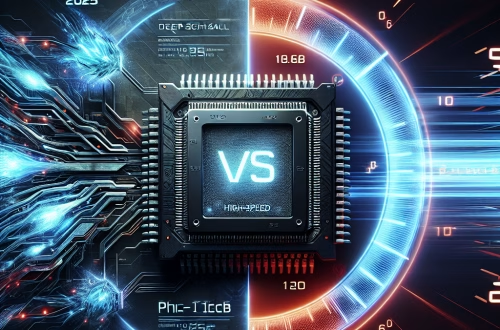Perplexity AI vs. Googleʼs Search Generative Experience (SGE) 2025
Summary:
This article compares Perplexity AI and Google’s Search Generative Experience (SGE) in 2025, two AI-powered tools revolutionizing how users access information. Perplexity AI is a conversational search engine that provides sourced answers using large language models (LLMs) like GPT-4 and Claude, while Google SGE integrates generative AI into traditional search for dynamic summaries, follow-up queries, and multimodal results. The competition matters because it reflects a broader shift from “search engine results pages” (SERPs) to interactive, AI-first experiences. For novices, understanding these tools clarifies the future of information retrieval, content creation, and ethical AI use.
What This Means for You:
- AI search will reshape your daily habits: Tools like Perplexity AI and SGE deliver faster, context-aware answers. Instead of sifting through links, you’ll get concise summaries with sources. Start practicing conversational queries (e.g., “Compare solar vs. wind energy for coastal homes”) to adapt.
- Bias and accuracy require vigilance: AI models can inadvertently amplify misinformation. Cross-check key facts with cited sources in Perplexity or Google’s “About this result.” For sensitive topics like health or finance, prioritize tools with transparent sourcing.
- New skills = better results: Use Perplexity for deep research with real-time data (e.g., “2025 quantum computing breakthroughs”) and SGE for local/multimodal searches (e.g., “Find rooftop bars in NYC with sunset views”). Label your queries by intent (factual, creative, exploratory) for optimal outputs.
- Future outlook or warning: By 2025, standalone AI search tools may struggle against Google’s ecosystem dominance. However, privacy-focused users might prefer Perplexity’s anonymous mode. Expect stricter regulations around AI-generated content, requiring platforms to disclose training data origins or risk penalties.
Explained: Perplexity AI vs. Googleʼs Search Generative Experience (SGE) 2025
The Basics: What Each Tool Offers in 2025
Perplexity AI focuses on “answer engine” functionality, combining GPT-4-class models with real-time web indexing. Users ask questions and receive responses annotated with citations (e.g., journal articles, news sites). Its “Copilot” feature refines queries interactively, making it ideal for academic or technical research. For example, a query like “Explain CRISPR applications in 2025 agriculture” yields bullet-point summaries linked to peer-reviewed studies.
Google SGE, meanwhile, blends generative AI into the traditional search workflow. Search “How do EVs impact grid stability?” and SGE generates a summary atop organic results, complete with follow-up prompts like “Compare Tesla vs. Rivian battery efficiency.” SGE excels in local intent (e.g., “Find eco-friendly dentists in Austin”) by pulling from Google Maps, Reviews, and indexed business data.
Core Strengths and Weaknesses
Perplexity’s Advantages:
– Transparency: Every claim is hyperlinked to sources, reducing “hallucinations.”
– Niche Expertise: Fine-tuned models for coding (“Perplexity Labs”) and academic research.
– Privacy: No persistent user profiles or personalized ads.
Google SGE’s Advantages:
– Scale: Leverages Google’s Knowledge Graph, indexing billions of pages.
– Multimodality: Integrates text, images, and video (e.g., showing TikTok DIY tutorials in results).
– Ecosystem: Syncs with Gmail, Docs, and Calendar for personalized planning (e.g., “Plan a keto diet using my fitness data”).
Shared Limitations:
– Both struggle with multilingual nuance outside major languages.
– Complex queries (e.g., “Predict post-election policy changes in Kenya”) risk oversimplification.
– Neither fully verifies source credibility—users must assess biases independently.
Accuracy Wars: Citations vs. Context
Perplexity uses live web crawling to ensure answers reflect current events (e.g., “Latest NATO summit outcomes”). In 2025, it introduced “Source Score,” ranking citations by domain authority and freshness. Google SGE relies more on its indexed corpus, which can lag real-time updates. However, SGE’s strength lies in contextual awareness—it personalizes answers using location, search history, and semantic intent. For instance, “best VPN” shows budget-focused options if past queries suggest cost sensitivity.
Best Use Cases
Choose Perplexity AI For:
– Rapid fact-checking with transparent sourcing.
– Cross-referencing academic/technical topics.
– Anonymous browsing (no tracking).
Choose Google SGE For:
– Local searches (business hours, event tickets).
– Multimedia learning (embedded videos, AR demos).
– Tasks requiring personalization (e.g., travel planning).
The Integration Challenge
Perplexity stays lightweight, avoiding bloat like ads or extraneous features. Google SGE, however, bakes AI into Android, Chrome, and Workspace. A 2025 update lets SGE draft emails in Gmail based on search intent (e.g., “Write a complaint using my smartwatch battery data”). This tight integration risks gatekeeping—SGE may prioritize Google services (Flights, Hotels) in commercial queries.
Ethical and Practical Limits
Neither tool handles real-time misinformation perfectly. During breaking news (e.g., “2025 Taiwan earthquake”), Perplexity might cite unvetted eyewitness posts, while SGE could delay results until “authoritative” sources like AP verify facts. Users must balance speed and reliability. Additionally, creative tasks (e.g., “Design a workout plan”) can produce generic outputs—fine-tuning queries is essential.
People Also Ask About:
- Does Perplexity AI cost money in 2025?
Perplexity offers a free tier with GPT-3.5-level answers and limited Copilot access. Its $20/month “Pro” plan includes GPT-4, Claude 3, and unlimited Copilot for complex research. Academic discounts apply. - Can Google SGE replace traditional SEO?
Partly. SGE emphasizes semantic relevance over keyword density. Content creators must structure articles around user intent (e.g., “how-to” steps, FAQs) and verify EEAT (Experience, Expertise, Authoritativeness, Trustworthiness) to rank in AI snippets. - Which tool is better for academic research?
Perplexity wins for citations and depth. It connects to JSTOR, arXiv, and ScienceDirect via APIs. SGE’s summaries lack granular sourcing but help brainstorm research angles (e.g., “List controversies in AI ethics 2025”). - How do they handle biased or controversial topics?
Perplexity shows multiple source perspectives (e.g., left/right-leaning outlets on climate policies). SGE defaults to mainstream consensus but flags “content advisories” for polarizing subjects (e.g., vaccine debates). Both log feedback to improve neutrality.
Expert Opinion:
The AI search race hinges on trust and adaptability. Perplexity’s citation rigor sets a standard for accountability, but Google’s infrastructure grants SGE unmatched contextual awareness. Novices should prioritize tools aligning with their needs—Perlexity for transparency, Google for convenience. However, over-reliance on AI summaries risks eroding critical thinking. Watch for regulatory shifts in 2025–26, as governments may mandate “AI origin” labeling on public-facing content.
Extra Information:
- Perplexity’s Accuracy Benchmarks – Details 2025 improvements in reducing hallucinations using retrieval-augmented generation (RAG).
- Google SGE 2025 Announcement – Explains integration with Android’s Gemini Nano for on-device AI processing.
- WIRED on AI Search Ethics – Discusses bias audits and source transparency challenges in Perplexity/SGE.
Related Key Terms:
- AI-powered search engines comparison 2025
- Perplexity Pro vs Google SGE pricing
- How Perplexity AI sources citations
- Google Search Generative Experience limitations
- Best conversational AI for academic research
- Privacy-focused alternatives to Google SGE
- Impact of generative AI on SEO strategies 2025
Check out our AI Model Comparison Tool here: AI Model Comparison Tool
#Perplexity #Googleʼs #Search #Generative #Experience #SGE
*Featured image provided by Pixabay




